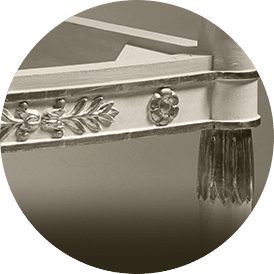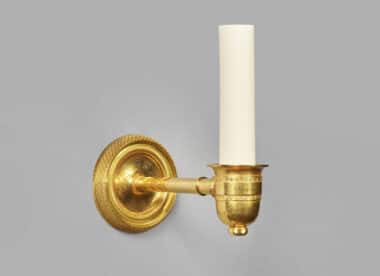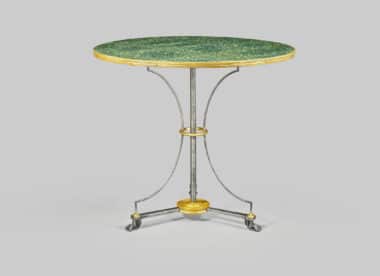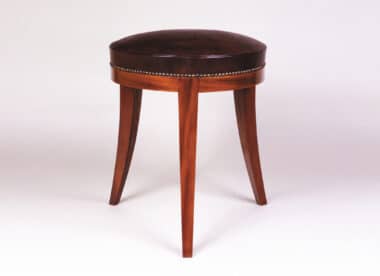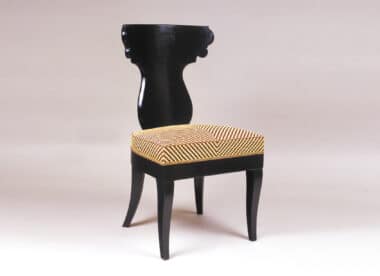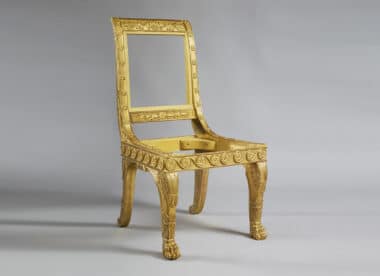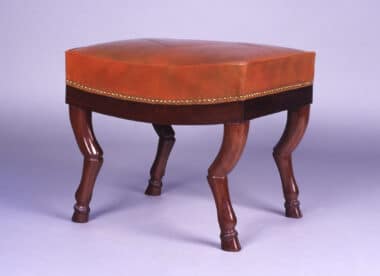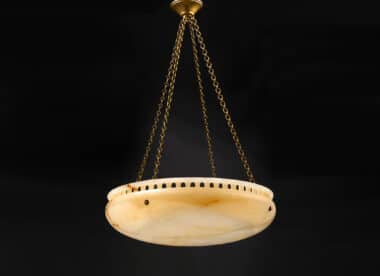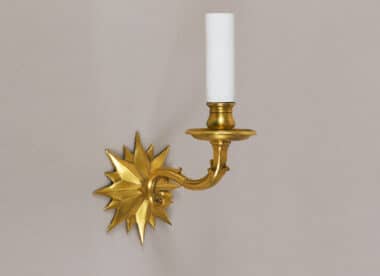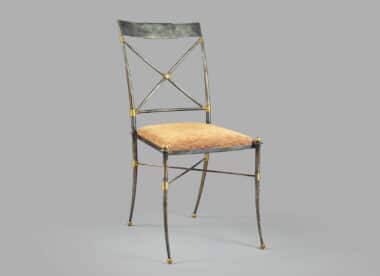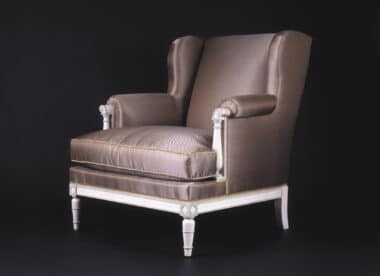EMPIRE STYLE
The French Empire style is a neoclassical design movement that emerged during the early 19th century in France. Napoleon Bonaparte encoraged a propagandistic style inspired by the glorious ancient Greek and Roman Empires. The grandeur of ancient Egypt likewise strongly influenced the Empire style after his Egyptian Campaign. Napoleon, having gained his position through his political and military achievements, used artists, designers and architects to promote and also legitimise his regime.
The French architects Percier and Fontaine, became the leading furniture designers in the 1790s. As a result, they received many public and private commissions. Golden eagle, palm leaves, laurel wreath, sphinxes, swan, bow and further arrows, lyre… were symbols and motifs of the style. In addition, the initials of the Emperor and Empress – N for Napoleon and J for Josephine became the imperial cypher.
Mahogany-veneered furniture and chairs with gilt-bronze mounts reflected the majestic style of the Empire. Jacob Desmalter was the principal supplier of furniture to the Emperor Napoleon for whom he supplied numerous pieces for the Chateau de Malmaison, the Tuileries Palace and further imperial residences.
The Empire style achieved great popularity and was adopted in Europe, especially in Russia. Royal and Imperial courts similarly adopted and adapted the style locally. In England it was known as the Regency style.
Josephine de Beauharnais bought in 1799 Chateau de Malmaison for herself and her husband General Napoleon Bonaparte, fighting the Egyptian Campaign. She made major improvements including the building of a heated orangerie and the creation of a famous rose garden. Birds and animals of all sorts began to enrich the garden. Kangaroos, zebras, ostriches, llamas… could roam freely in the park. Located nearby Paris, Chateau de Malmaison is a beautiful and elegant country house filled with Empire period furniture, sculpture and paintings.







